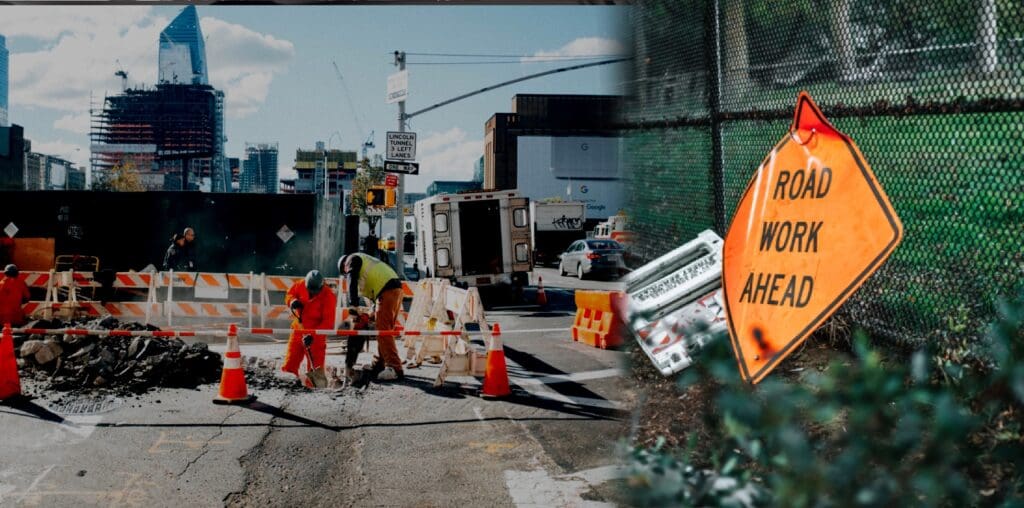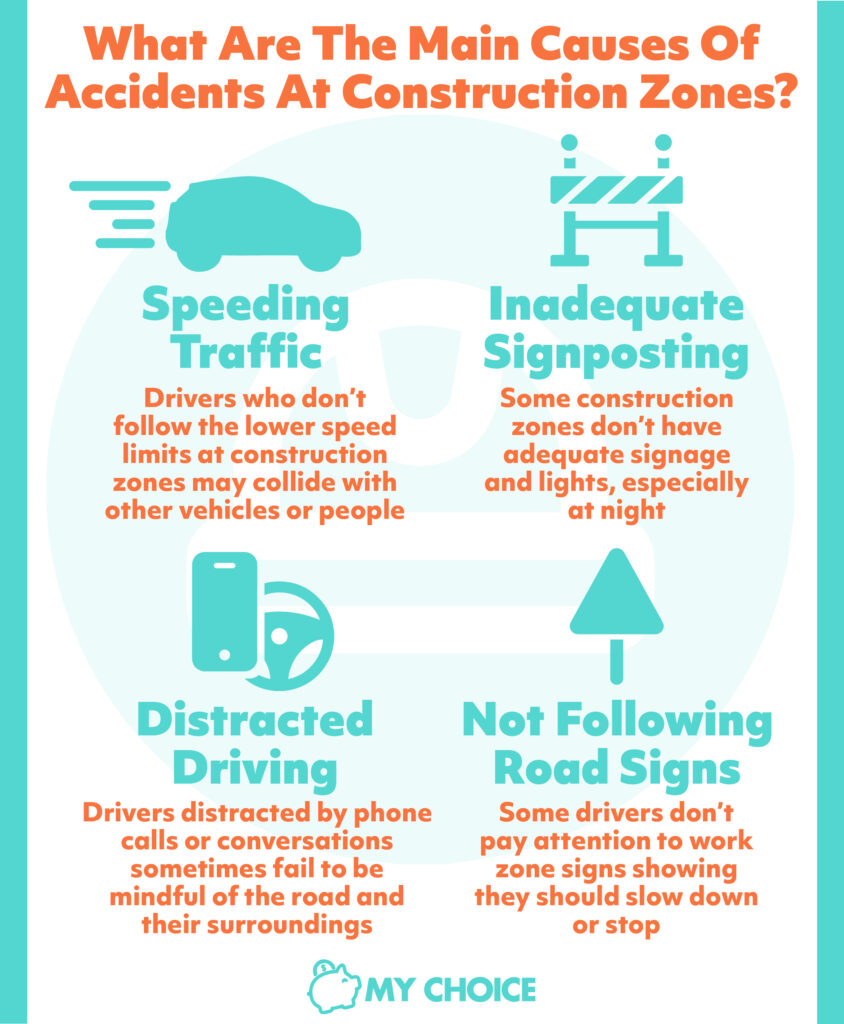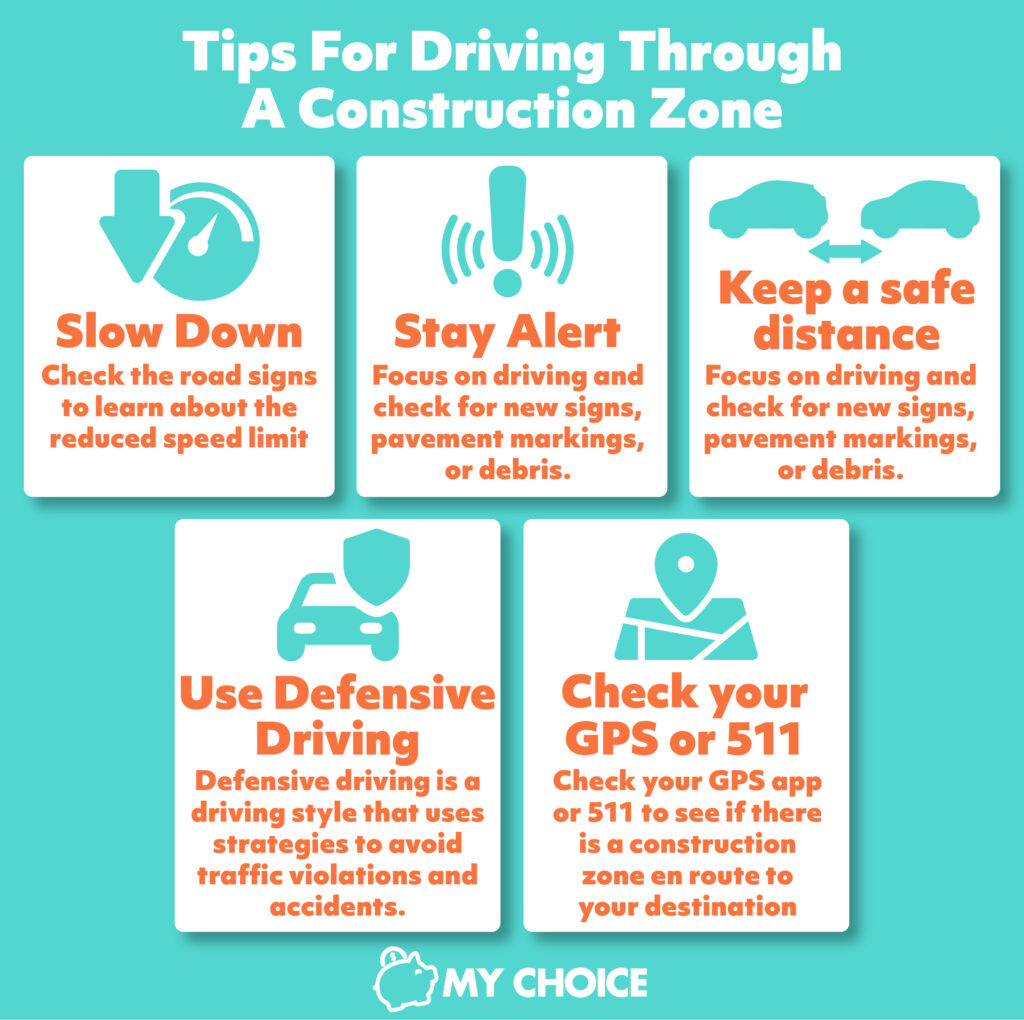
Every now and then, you’ll inevitably pass by construction zones while driving, especially if you’re living in Toronto. When this happens, you have to pay special attention to signs and speed limits. Not following these signs and rules isn’t only dangerous but may also lead to paying hefty construction zone fines.
To prevent you from getting into this tough situation, we’ll share some of the most common road signs you’ll encounter in a construction zone within Ontario and we’ll also share some of the rules you have to keep in mind.
How Do You Identify A Construction Zone?
Construction zones are where roadwork occurs, usually marked by signages and pylons at the beginning and end. You may also find traffic control personnel standing by to help direct traffic.
What Is The Speed Limit For Construction Zones in Ontario?
The speed limit for construction zones varies, so you need to pay attention to the signs in the area. Generally, you have to follow a speed limit of 50 km/h to 70 km/h on highways, and the speed limit is even lower for secondary or regional roads.
Even if there are no workers in construction zones, you still have to follow the speed limit. These can help protect you from various hazards, including:
- Changes in the alignment of lanes
- Reduced sight distance
- Uneven road surfaces
- Debris on the road
- Loose gravel
Understanding Construction Signs In Ontario
Below are some of the construction road signs you need to be familiar with:
- Construction sign: This means construction work is being done 1 kilometre ahead.
- Roadwork ahead: This means that roadwork is being done ahead.
- Survey crew: This means that surveyors are checking the land and road in the vicinity.
- Traffic control person: This means that a traffic control person provides special instructions on the construction site. Drive slowly and pay attention to their hand signals.
- Entering a construction zone: You’re entering a construction zone. Prepare for a lower speed limit.
- Temporary detour: This shows a detour from the regular traffic route. You either have to take a different road or merge into a different lane.
- Arrow: The flashing lights on the arrows show the direction to follow.
- Milled or grooved pavement: This means that the pavement has been milled or grooved. This can increase the risk of skidding and may cause you to lose control of the vehicle.
- Closed for roadwork: Follow the speed limit and merge with traffic in the open lane.
- Closed lane: Adjust your speed to merge with traffic in the lane indicated by the arrow.
- Pilot vehicle: Do not pass the vehicle bearing this sign.
- Stop and slow signs: Reduce speed and be prepared to stop.
- Detour marker: Follow the detour marker until you return to the regular route.
- Double fines: In areas with this sign, violation of construction signs can lead to double the usual Highway Traffic Act (HTA) fines. This applies to cases where you’re caught speeding in a designated construction zone when there are workers present.
What Are The Main Causes Of Accidents At Construction Zones?
Construction zones can be hazardous to motorists, pedestrians, and construction workers if they don’t work together to prevent accidents. Here are some of the main reasons for untoward incidents:
- Speeding traffic: Drivers who don’t follow the lower speed limits at construction zones may collide with other vehicles or people.
- Distracted driving: Motorists distracted by phone calls or conversations sometimes fail to be mindful of the road and their surroundings.
- Inadequate signposting: Some construction zones don’t have adequate signage and lights, especially at night.
- Not following road signs: Some drivers don’t pay attention to work zone signs showing they should slow down or stop.

Tips For Driving Through A Construction Zone in Ontario
Roads need regular repair and maintenance, which is why you often encounter construction zones. Here are some tips to help you when driving through them:
- Slow down: Check the road signs to learn about the reduced speed limit. You should also check your surroundings to see if traffic control personnel are providing additional instructions.
- Stay alert: Focus on driving and check for new signs, pavement markings, or debris. Turn your radio off and put your phone on silent mode, if necessary.
- Keep a safe distance: Maintain a safe distance between you and the vehicle in front of you. Some vehicles stop suddenly in a construction zone to avoid debris or potholes.
- Practice defensive driving: Defensive driving is a driving style that uses strategies to avoid traffic violations and accidents. In a construction zone, practicing defensive driving can help you navigate uneven roads and unusual traffic patterns.
- Check your GPS or 511: Check your GPS app or 511 to see if there’s a construction zone en route to your destination. Prepare to take an alternative route if necessary.

What Is The Fine For Speeding In A Construction Zone?
Fines for driving over the speed limit in Ontario are doubled if you’re speeding in a construction zone. For example, if you’re caught driving over 30 km/h over the speed limit in a construction zone, you need to pay fines for driving 60 km/h over the limit. Normally, you need to pay $7.00 per kilometre per hour over the speed limit, but in this case, it’ll be $9.75 per kilometre per hour.
What Happens If You Don’t Follow The Speed Limit In A Construction Zone?
Aside from getting a fine, you may also get up to three demerit points. You may even get your license suspended.
Do Demerit Points Affect Your Insurance Premium?
Yes, demerit points are added to your driver’s license and may cause you to be charged higher premiums. That’s because the insurance company will see you as a “risky driver” prone to getting into an accident.
Can You Pass Other Cars In A Construction Zone In Ontario?
You shouldn’t pass other vehicles when you’re in a construction zone. The road ahead may be undergoing maintenance, or there may be a lane that ends abruptly. Wait until you’re out of the construction zone before trying to pass another vehicle.
Drive Through A Construction Zone Safely
Passing by a construction zone once in a while is unavoidable. Still, driving through one doesn’t have to cause anxiety or trouble. Just follow the road signs, keep your eyes peeled for uneven road surfaces, and obey the lower speed limits. With these tips, you can safely drive through a construction zone without getting into an accident, incurring violations, or paying hefty fines.








